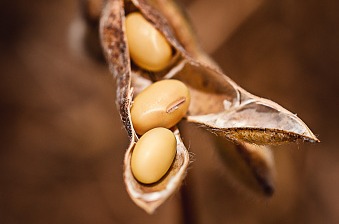Soaking Wet Conditions Delay Planting of Oilseeds in Canada and Parts of the US

Canada’s Eastern Fields are Soaked, Western Fields Still Bone Dry
Planting progress in Canada has fallen well behind schedule, due to soaking wet conditions in the eastern crop areas, while drought persists in the west. The vast majority of Canada’s field crops are grown in the so-called prairie provinces of Saskatchewan, Manitoba, and Alberta. Throughout April and May, heavy storms brought rain and snow to the eastern growing areas. The heavy precipitation was welcome as it replenished soil moisture after a parched 2021, but has now turned into an obstacle for farmers trying to get their crops in the ground.
Saskatchewan farmers have planted only 33% of all field crops as of May 16th, which is well behind the 5-year average of 53%. Conditions are progressively wetter towards the eastern parts of the province and there is a large variation even within Saskatchewan. Normally more than half of Canada’s canola areas are planted in Saskatchewan (54% in 2021), and to May 16th, canola plantings only progressed to 19%, well behind the 5-year average of 45%.
Planting progress of all crops in Manotiba stood at a meager 10% for the week ending May 24th. This is way below the 5-year average of 77%. According to the Government of Manitoba’s previous crop report, farmers are planting field crops with a longer growing season first, for example, peas, wheat, and corn. This buys them some time to plant canola, which has a shorter growing season, later on. The report goes on to state that the area under canola will most likely be higher than the 3.3 million acres in Statistics Canada’s April estimates. Manitoba’s area under canola was 15% of the national total in 2021.
Most of Alberta’s field crop areas are still experiencing extreme drought, in stark contrast to Manitoba and the eastern areas of Saskatchewan. Alberta is making better progress, and 49% of all crops have been planted, compared to the 5-year average of 55%. Canola planting progressed to 29% complete, while the 5-year average is 37%. Alberta’s area under canola was 30% of the national area in 2021.
Ontario and Quebec have been experiencing favorable conditions for fieldwork and plantings have progressed well. Ontario’s soybean planting progress stood at 15% for the week ended May 15th, but has now most likely already passed the halfway mark. The areas under soybeans were 65% and 18% of the national total for Ontario and Quebec respectively in 2021.
Spotty Plantings in the US
US soybean plantings were 50% complete compared to the 5-year average of 55%, as on May 22nd. At first glance, it seems as if plantings are only lagging behind slightly, but the erratic progress in different states is of concern. As is the case in Canada’s southeastern crop areas, the northeastern crop areas of the US are soaked through and through, with conditions progressively drier to the west.
Soybean plantings are ahead of the 5-year average in 12 of the 18 states reported in the USDA’s latest crop progress report. However, the states of Minnesota, North Dakota, South Dakota, and Ohio are well behind schedule. Plantings in Minnesota, the third-largest soybean state in terms of area, have only progressed by 32%, against the 5-year average of 68%. Minnesota’s soybean area was 9% of the national total in 2021. North Dakota is by far the most concerning, as soybean plantings have only progressed to 7% complete, far below the 5-year average of 47%. North Dakota planted 8% of the national soybean area in 2021. South Dakota and Ohio have progressed to 34% and 36% respectively, compared to the 5-year averages of 47% and 43%.

Sunflower plantings have also fallen behind the 5-year average of 15%. As of May 23rd, only 5% of the intended areas have been planted in the four states reported by the USDA. North Dakota is the country’s largest sunflower state and planted 39% of the national area in 2021. North Dakota is also the state most severely affected by heavy rains and plantings have only progressed by 3%, against the 5-year average of 21%. South Dakota’s sunflower areas are 6% planted, compared to the 5-year average of 11%. Colorado is slightly behind the 5-year average, and Kansas is planting at the same pace as the 5-year average.
More Rain Expected over Eastern Crop Areas
There has been a small window for farmers to make some progress in planting throughout this week. A few warmer and drier days have been observed, especially in Manitoba, but might only last until the weekend. More rain is forecast to fall over the eastern crop areas from Saturday and Sunday (May 28th and 29th). Canola yields are optimal if planted in May, and the final planting dates, as recommended by the Manitoba Agricultural Service Corporation are between June 10th to 20th (depending on the location and variety of Canola to be planted).
Similarly, the US could also receive more rain over the weekend. Northern Minnesota and North Dakota, which are of the greatest concern, are forecast to again receive showers on Saturday and Sunday, and only had a few days where fieldwork was possible. The deadline for planting soybeans is June 10th in both states, if farmers are to receive crop insurance.
If Canadian farmers are unable to make significant progress in the coming weeks, they might opt to switch to crops that have a shorter growing season, as has already been observed in Manitoba, where canola areas might increase. US farmers will desperately try to get soybean planting done. Sunflowers have a shorter growing season and could win some area, but farmers will stick to soybeans wherever possible.



